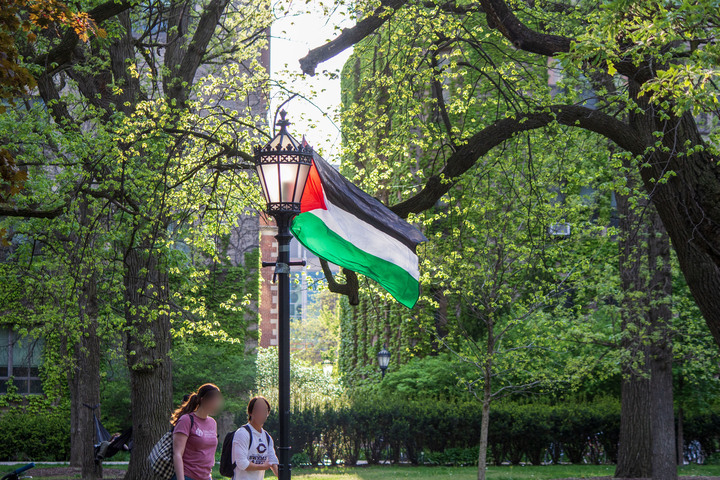Editor’s Note: This is the first of a two-part series on the prospects of democracy and American action in Iran.
A question that has been repeatedly asked since the overthrow of the shah and the establishment of Iran’s theocratic regime in 1979 is: When will the regime fall and democracy rise?
Notice that didn’t say “if.” I am not assuming that the question of democracy in Iran is a question of when. Other people do. In some ways, they have cause for their optimism. Most experts believe that the rise of Ayatollah Khomeini and his theocratic regime in 1979 was, in effect, a political heist. A cabal of clerics used the groundswell of support for overthrowing the shah as a pretext to implement their own repressive regime. Some think that a democratic Iran will happen simply because it was supposed to happen nearly 30 years ago.
But if there is to be democracy in Iran, it will be because of the students.
Goethe once said that “the destiny of any nation, at any given time, depends upon the opinions of its young men, under 25.” The median age of Iran is 24.8. Iranian students have been a potent social force in their country for decades, both because there are so many of them and because they have historically been remarkably active in politics.
In two decades following the 1979 revolution, the Iranian population doubled. The student population increased from 7 to 19 million. Many students are in Tehran, and many of them are politically active. They took to the streets in 1999 and were brutally neutralized by police. They did so again in 2003 when a history professor was sentenced to death for making a public statement that criticized the religious leadership of the Ayatollah. The professor’s sentence was commuted to flogging and life in prison, and the students were once again beaten by their government. But the students haven’t stopped. They have formed political organizations and underground resistance groups. One journalist recently wrote that in Tehran, old men often shout at young women who do not fully cover their heads. Now, the women shout back.
Part of this political activity derives from the fact that today’s students do not have the same reverence for the 1979 revolutionaries that their parents did. They do not remember the past repression of the shah, only the current repression of the clerics.
Part of their activity comes from the fact that so many young Iranians (30 percent) are unemployed, and that number will surely rise. One million Iranians enter the workforce every year.
And their political activity is encouraged by the knowledge, brought via the internet and other global media, that people their age are enjoying a political freedom that they have never known.
But not all Iranian students see politics as the outlet for their discontent. Some would rather leave. In a government-conducted survey, 45 percent of young Iranians indicated that, given a chance, they would leave Iran for a life of exile.
Others are turning to drugs. Despite Herculean efforts by the government to curb drug use, at least two million Iranians are drug users, with richer kids in Northern Tehran using more Western drugs like ecstasy and heroin while the poorer segments south of the city are resorting to opium use.
Furthermore, not all young Iranians are against their government. In a recent issue of The New Republic, Matthias Kuntzel described the Basiji, a mass movement created by Khomeini in 1979 and used in the Iran-Iraq war to, among other things, encourage their teenage members to march in front of the Iranian army to clear the battlefield of landmines with their bodies. The Basiji are now an extralegal, fascist force that is given a free hand by President Ahmadinejad, a former Basij instructor. They helped the police break into the student dorms in 1999. There are 10 million members, and its leaders hope to increase that membership to 15 million by 2010.
So the portrait is not a clear one. There are many students in Iran, and yes, many of them are politically active, and yes, many of those are against the current regime. But some would rather leave the country, and some are addicted to drugs. There are even some who are not against the regime but part of its worst elements.
In the final analysis, there is some hope for the students, and, consequently, for Iran. A new generation of Iranians are coming of age in a society where their government can claim to have overthrown the shah but has perpetrated crimes worthy of another revolution. The regime has exacerbated unemployment and has systematically repressed anyone who doesn’t agree with the way the country is run. The regime’s insistence on trying to control the social norms of society—whether it be clothes, music, or news—is Pyrrhic at best. The regime understands that its greatest weakness lies in the social sea-change happening all around it. A globalizing world is being smuggled into Iran by bits and pieces.
A social revolution is underway, but it may take years. The students will rise up, just not any time soon. However, they most certainly won’t rise up when Bush starts the bombing. But I’ll just have to wait until Friday’s issue to talk about that.







